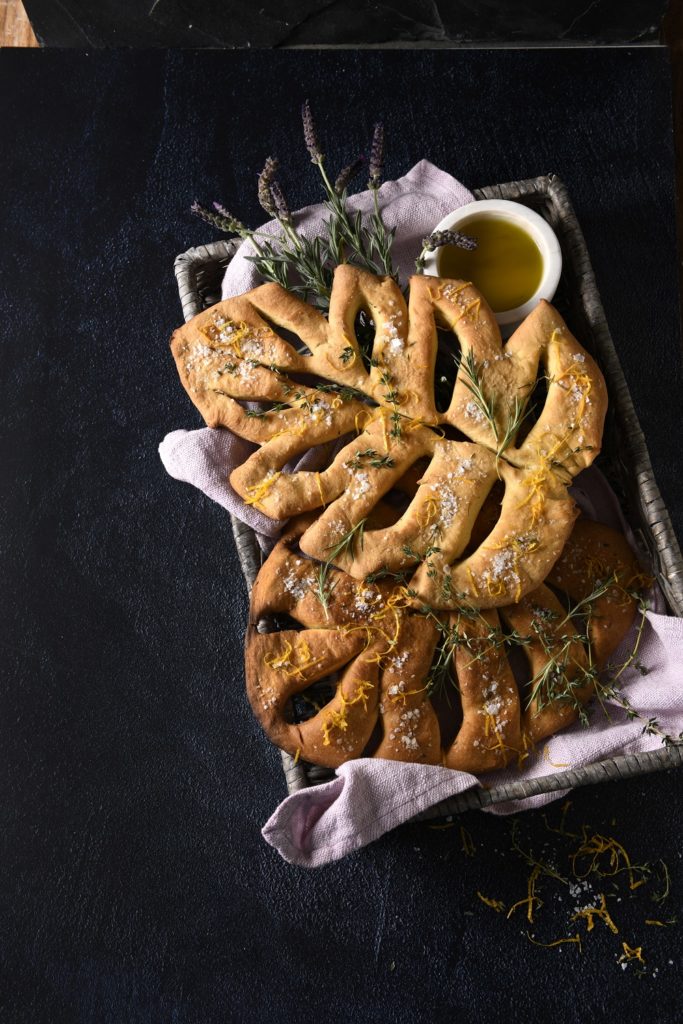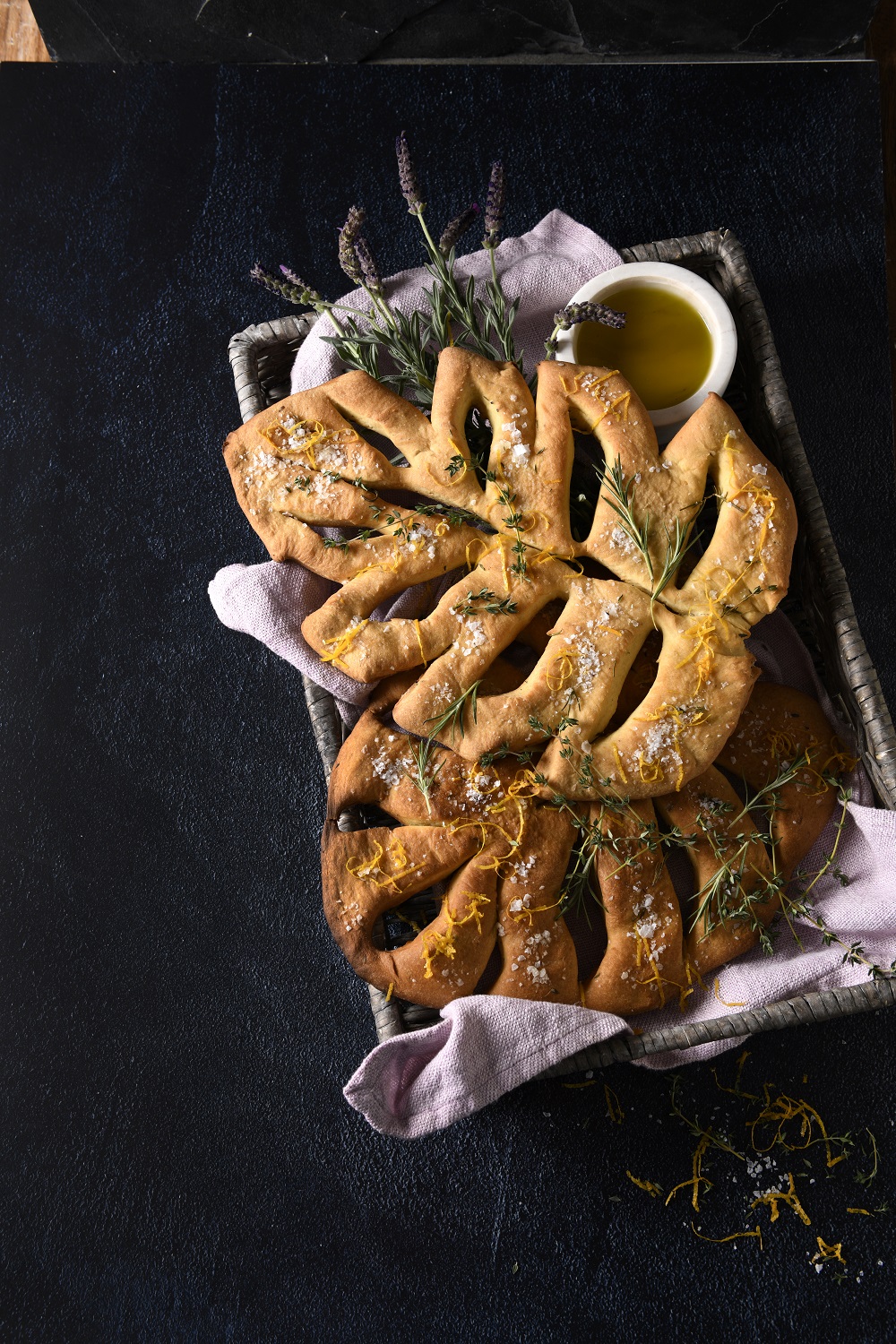A wonderful and often forgotten French bread, fougasse is a beautifully shaped loaf that is typically associated with Provence, yet it can be found in other regions of France as well. Similar to the Italian focaccia, fougasse is usually formed into plant-related shapes like leaves, trees or stalks of wheat, or it is simply slashed so that, when baked, it’s easy to pull apart. Bursting with flavour, this striking creation is sure to add glamour and wow factor to any table.
Recipe and styling by Robyn Timson Moss
Photograph by Roelene Prinsloo
Fougasse with orange zest and Herbes de Provence
Ingredients
STARTER (mother dough)
- 1 tsp white sugar
- 125ml (½ cup) warm water
- 2 tsp instant dried yeast
- 100g white bread flour
DOUGH
- 165ml water
- 85ml extra-virgin olive oil + extra, to grease, brush and serve
- 2 tbsp white sugar
- 1½ tsp salt
- 1 tbsp culinary lavender
- 1 tbsp chopped fresh rosemary + extra, to garnish
- 1 tbsp chopped fresh thyme + extra, to garnish
- 1 tbsp orange zest + extra, to garnish
- 525 – 575g white bread flour + extra, to dust
- 2 tbsp sea salt flakes
- fresh lavender tops, to garnish
Instructions
For the starter, combine the 1 tsp white sugar and the 125ml (½ cup)warm water in a medium bowl. Sprinkle over the yeast and set aside until the mixture becomes foamy, about 5 minutes. If the mixture does not foam, discard it and start over using fresher yeast. Whisk the 100g white bread flour into the yeast mixture until incorporated well. Cover the bowl with cling film and set aside to rest in a warm, draught-free space for about 30 minutes.
For the dough, place the starter in the bowl of a stand mixer fitted with the paddle attachment. Add the 165ml water, extra-virgin olive oil, 2 tbsp white sugar, salt, herbs and orange zest. Mix until well combined. Add the 525 – 575g white bread flour, ½ a cup at a time, mixing until smooth after each addition. Once enough flour has been added to achieve a smooth dough that is not sticky, continue to mix on a low speed for 2 – 3 minutes.
Turn the dough out onto a clean, floured work surface and knead until smooth and elastic, 8 – 10 minutes. Form the dough into a ball and transfer to a large, well-oiled bowl. Turn the ball to coat with the oil. Cover with cling film and set aside to rest in a warm, draught-free space until doubled in size, 1 – 1½ hours. Line 2 baking trays with baking paper. Set aside.
Gently punch the dough down and divide it in ½. On a lightly floured work surface, pat/roll out the dough halves into 30 – 40cm long, 2 – 3cm thick oval shapes. To create the leaf shapes, use a small paring knife to make incisions down the centre of each oval, leaving a few centimetres of dough intact at the top and bottom of each incision. Make diagonal slits along both sides of the central cuts so as to mark the points where the leaves split open. Make sure none of the cuts are connected to each other.
Transfer the dough shapes to the prepared baking sheets. Gently tug at the diagonal slits to create different-sized holes in the dough. For variation, mould the edges of one of the loaves to resemble the uneven edges of a leaf. Set aside to rest, uncovered, in a warm, draught-free space until puffed up, about 30 minutes. Preheat the oven to 190°C.
Brush the loaves with extra-virgin olive oil and sprinkle with the sea salt flakes. Bake in the preheated oven until golden and crunchy, and the loaves make a hollow sound when tapped, about 20 minutes. Serve immediately, garnished with fresh lavender, fresh rosemary, fresh thyme and orange zest. Enjoy with extra-virgin olive oil alongside, for dipping.


